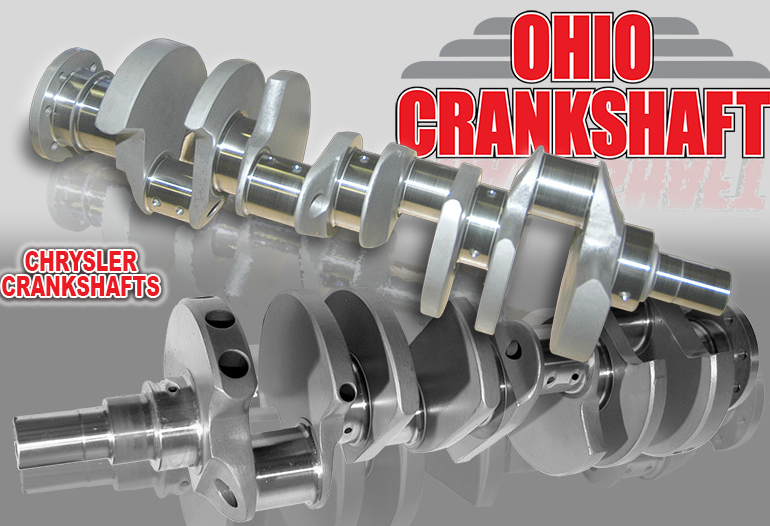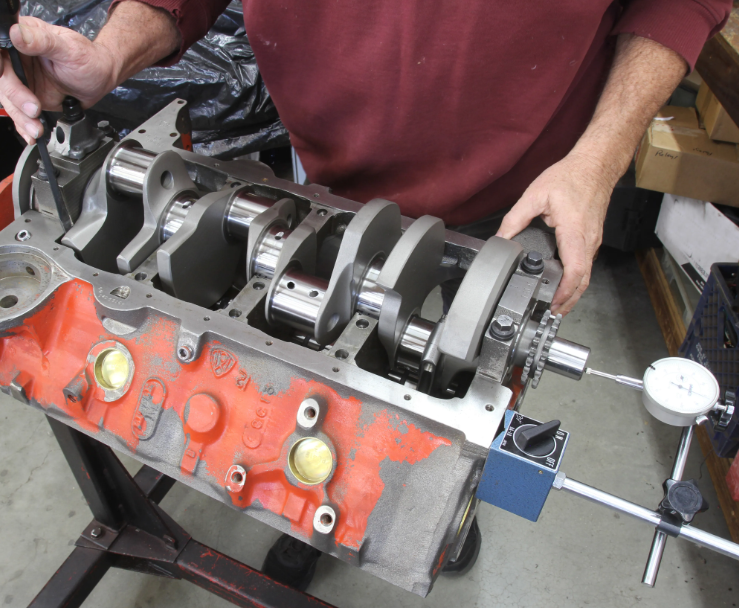Can You Buy a New Crankshaft?Certainly! You can! Whether your current crankshaft is damaged or you’re looking for an upgrade, purchasing a new one allows you to restore or enhance the performance of your engine. Several automotive parts stores and online retailers offer a wide range of crankshafts suitable for various engine models.

Understanding the Crankshaft
Definition and Function
A crankshaft is a mechanical component integral to an internal combustion engine. Its primary role is to convert the linear motion generated by the pistons into rotational motion. Essentially, the crankshaft acts as the heart of an engine, controlling the engine’s cycles and facilitating smooth operation. The conversion of motion happens via “crank throws” or “crankpins”, offset from the axis of the crankshaft, where the pistons connect.
Importance in Engine Performance
The importance of a crankshaft in engine performance cannot be overstated. The crankshaft ensures that the pistons move in synchronized order, promoting a smooth and balanced engine operation. Furthermore, the crankshaft’s rotational motion powers the vehicle’s drivetrain, thereby influencing the car’s speed, fuel efficiency, and overall performance. It’s also responsible for driving additional components such as the alternator, water pump, and oil pump. Consequently, a faulty or sub-par crankshaft can significantly compromise an engine’s performance. That’s why regular crankshaft inspection and maintenance are crucial for optimal engine operation.
Factors to Consider Before Buying a New Crankshaft
Compatibility with Engine Model
Before buying a new crankshaft, it’s crucial to ensure it’s compatible with your engine model. Crankshafts come in different designs, sizes, and specifications. Each one is designed to fit a particular engine type, model, and make. Therefore, always refer to your vehicle’s manual or consult a knowledgeable mechanic to determine the correct crankshaft for your engine.
Quality and Material Selection
The quality and material of the crankshaft are essential factors to consider as well. Crankshafts are typically made from cast iron or forged steel due to their high strength and durability. High-quality materials can withstand the high pressures and temperatures within an engine. Forged steel crankshafts are generally more durable and capable of handling higher power outputs but come at a higher price. On the other hand, cast iron crankshafts are cheaper and sufficient for most standard applications. It’s also crucial to check if the crankshaft has undergone heat treatment, a process that significantly enhances its strength and resistance to wear and tear.
Cost and Budget Considerations
Finally, consider your budget before deciding on a new crankshaft. The price of a crankshaft can vary significantly depending on its material, design, brand, and whether it’s new or refurbished. While it’s tempting to go for the cheapest option, remember that this can often lead to higher costs down the line due to frequent repairs and replacements. Consider investing in a high-quality crankshaft from a reputable manufacturer to ensure longevity and optimal engine performance.

Where to Purchase a New Crankshaft
Automotive Parts Stores
Automotive parts stores are the go-to choice for many when it comes to buying a new crankshaft. These stores typically offer a wide range of options for various engine models. Many also have knowledgeable staff who can provide advice and guidance, ensuring you select the right crankshaft for your engine.
Online Retailers
In the digital age, online retailers such as Amazon, eBay, and specialized auto parts e-commerce platforms have become increasingly popular for automotive part shopping. The primary advantage is convenience; you can browse a wide selection of crankshafts from the comfort of your home, compare prices, read reviews, and have your chosen crankshaft delivered to your doorstep. Be sure to purchase from reputable sellers to avoid counterfeit or subpar products.
Salvage Yards and Junkyards
Salvage yards and junkyards can be a gold mine for car parts, including crankshafts. These places often have parts from vehicles that were totaled in accidents but had some parts left unscathed. You can potentially find a perfectly good crankshaft at a fraction of the cost of a new one. However, it’s vital to have a fair understanding of what you’re looking for since these parts usually come as-is, without warranties.
Tips for Buying a New Crankshaft
When buying a new crankshaft, always verify its compatibility with your engine model first. Also, consider the material and manufacturing process, as they impact the crankshaft’s durability and performance. For online purchases, buy from reputable retailers and check customer reviews. Finally, remember that while price is a factor, it should not compromise the quality of the crankshaft. After all, a substandard crankshaft can lead to major engine problems in the long run.
Installing a New Crankshaft
DIY vs. Professional Installation
Deciding whether to install a new crankshaft by yourself or to enlist professional help depends on your level of expertise and confidence with engine repairs. Doing it yourself can save on labor costs, but it’s a complex task that requires precision and technical knowledge. A wrong installation can cause severe engine damage, so if you’re unsure, it’s safer to hire a professional mechanic.
Necessary Tools and Equipment
To install a crankshaft, you will need an array of automotive tools. The necessary equipment includes a crankshaft socket, torque wrench, plastigauge, dial indicator, and feeler gauges. Protective equipment such as gloves and safety glasses is also essential. If the crankshaft is being installed as part of a larger engine rebuild, additional tools like piston ring compressors and cylinder hones may be necessary.
Step-by-Step Procedure
Installing a crankshaft involves the following steps:
- Prepare the Crankshaft and Engine Block: Clean both the new crankshaft and the engine block thoroughly. Any dirt or debris left on the crankshaft or engine block can cause damage once the engine is running.
- Measure Bearing Clearances: Use plastigauge or a micrometer to measure the bearing clearances. This step ensures that the bearings fit correctly and are the right size for your new crankshaft.
- Install the Bearings: Install the crankshaft bearings into the engine block. Use assembly lube to reduce the friction when you first start the engine after the installation.
- Place the Crankshaft: Carefully place the crankshaft onto the bearings. Avoid any forceful contact between the crankshaft and bearings as it could cause damage.
- Install the Bearing Caps: Install the bearing caps and tighten them to the manufacturer’s torque specifications using a torque wrench.
- Final Check: Once the crankshaft is installed, check the crankshaft end-play with a dial indicator and feeler gauge to ensure the crankshaft has the correct amount of axial or ‘end’ movement.
Please note, this procedure is a high-level overview. Each engine is different and may require additional steps or considerations. Always refer to your vehicle’s service manual for detailed instructions.
Maintenance and Care for a New Crankshaft
Regular Inspection and Lubrication
Regular inspection and lubrication are crucial for maintaining the health of your crankshaft and ensuring the longevity of your engine. You should inspect the crankshaft for any signs of wear, cracks, or damage, especially on the bearing surfaces. Lubrication is also critical to prevent metal-on-metal contact between the crankshaft and the bearings. Use high-quality engine oil and follow the manufacturer’s recommendations for oil change intervals.
Proper Break-in Procedures
When you install a new crankshaft, the engine will need to go through a break-in period to allow the new parts to adjust to each other. It’s essential to follow the manufacturer’s break-in procedures. These typically involve running the engine at a lower RPM for a certain amount of time and avoiding heavy loads. Break-in procedures can vary, so always refer to the manufacturer’s instructions.
Monitoring Engine Performance
After the installation of a new crankshaft, keep a close eye on your engine’s performance. Pay attention to any changes in noise, vibration, or power output. These could be signs that the crankshaft isn’t functioning correctly. Utilize tools like oil pressure gauges and engine diagnostic scanners to monitor the engine’s health. Regular monitoring can help catch any potential issues early and prevent major engine damage.
What is a crankshaft?
Why would I need to buy a new crankshaft?
Where can I buy a new crankshaft?
How do I ensure compatibility when buying a new crankshaft?
What factors should I consider when buying a new crankshaft?
Can I install a new crankshaft myself?
How do I maintain a new crankshaft?
What are the common signs of a damaged crankshaft?